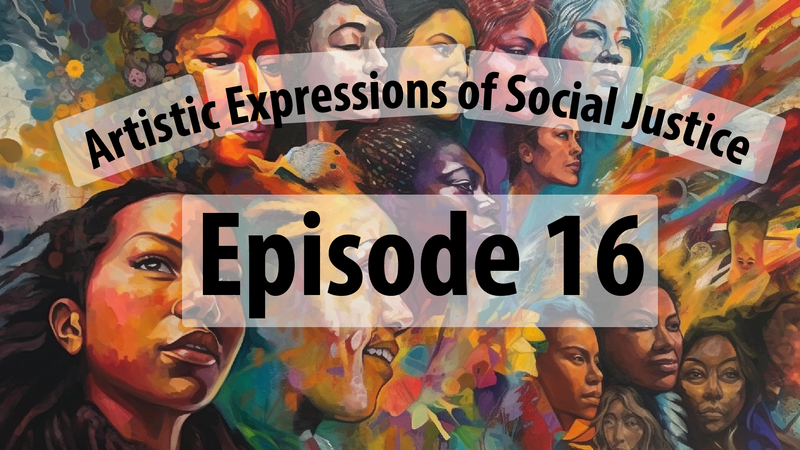Artistic Expressions of Social Justice: A Critical Examination
In an era where activism and art frequently intersect, the concept of "artistic expressions of social justice" has become a popular topic of discussion. Many proponents argue that art is a potent tool for social change, challenging oppressive systems and promoting justice. However, it is imperative to critically examine this assertion, avoiding the pitfalls of uncritical acceptance. Through a blend of historical references, intelligent analysis, and unapologetic pursuit of intellectual rigour, this article aims to challenge conventional wisdom surrounding the role of art in social justice movements.
Art as a Catalyst for Social Change: The Romanticized Narrative
Advocates of artistic expressions of social justice often romanticize the notion that art has the power to incite social change. They point to historical examples, such as Picasso's "Guernica," which exposed the horrors of war, or the music of Bob Dylan, which served as a soundtrack to the civil rights movement. Undoubtedly, these artworks have had a significant impact on public consciousness. However, we must not overlook the selective nature of such examples and the limitations of art as an agent of tangible change.
Historical Precedents: The Ambiguous Legacy of Artistic Activism
Throughout history, artists have indeed engaged with social and political issues. Yet, we must recognize the inherent ambiguity of their contributions. It is crucial to consider the multitude of perspectives within any given movement and question whether art can truly represent the diverse range of experiences and aspirations of marginalized communities. While some artists may claim to speak for the oppressed, the danger of oversimplification and misrepresentation is ever-present.
Moreover, history reveals that the impact of artistic expressions on social change is often limited. For instance, the Russian Revolution saw artists actively promoting communist ideals, but their influence failed to create lasting change or address the systemic issues that plagued society. Similarly, the abstract expressionist movement in mid-20th century America, seen by some as a response to social inequality, ultimately failed to produce substantial political change.

The Limits of Symbolism: Art versus Concrete Action
Artistic expressions of social justice tend to rely heavily on symbolism and metaphor. While these creative techniques can be powerful in conveying emotions and generating empathy, they often fall short regarding concrete action. No matter how evocative, artistic representations cannot directly address the root causes of social injustices or dismantle oppressive structures. The danger lies in mistaking the emotional impact of art for genuine progress in addressing systemic issues.
Art must be complemented by substantive action and a commitment to structural transformation to effect change truly. Movements that have successfully challenged societal norms and brought about lasting change, such as the civil rights movement, did so not solely through art but through a combination of grassroots organizing, legal battles, and sustained activism.
The Commodification of Activism: The Co-optation of Art
The commercialization of art poses another significant challenge to the idea of artistic expressions of social justice. In an age of consumer capitalism, the art world is not immune to market forces. The commodification of social justice narratives in art risks diluting their potency, turning them into mere commodities for mass consumption. The industry often co-opts radical messages, sanitizes them, and transforms them into easily digestible, non-threatening forms.
Moreover, the tendency to reduce complex social issues into easily digestible art forms for widespread consumption runs the risk of oversimplification. As a result, artistic expressions of social justice may be reduced to clichés, devoid of the critical analysis necessary for meaningful change. This trend perpetuates the status quo and distracts from the systemic issues, leading to a hollow, superficial engagement with social justice concerns.
Conclusion: Challenging the Romanticized Notion of Artistic Expressions of Social Justice
While art undeniably can inspire, evoke emotion, and raise awareness, it is crucial to maintain a critical stance when evaluating its role in social justice movements. Romanticizing the transformative power of art risks overlooking its limitations and potential pitfalls. Artistic expressions should be regarded as one tool among many, alongside activism, education, and political engagement, to pursue social change.
Rather than viewing art as a panacea for social injustices, we should recognize the complexities and ambiguities inherent in its relationship to activism. This requires a nuanced understanding of history, a commitment to substantive action, and constant vigilance against the co-optation and commodification of radical messages.
In our pursuit of justice, we must not succumb to the allure of easy answers and oversimplified narratives. We can challenge oppressive systems and work towards a more equitable society through a multidimensional approach.


